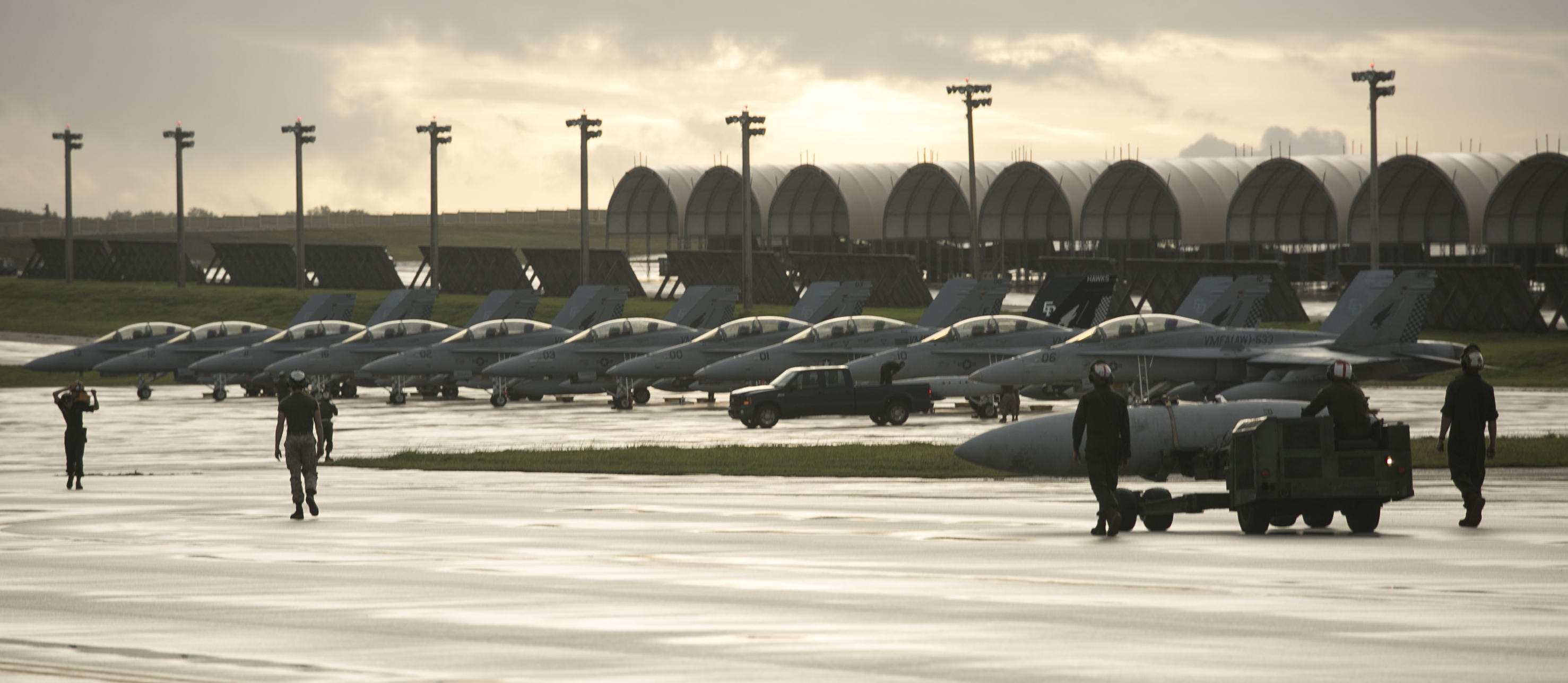
The Marine Corps has hired an independent review team lead to look at Class C aviation mishaps, which have doubled over the last year amid the current aviation readiness crisis.
Deputy Commandant for Aviation Lt. Gen. Jon Davis told reporters after a House Armed Services Committee hearing today that he hired someone who will spearhead a review team – which will have access to travel dollars to get out to the fleet and see first-hand what’s going on with Marine pilots and aircrews. While Class A mishaps – the most serious class, involving either a fatality, the loss of an aircraft or more than $2 million in damages – have remained steady over the last four or so years, Class C mishaps – which involve damages of $50,000 to $500,000 or personnel injuries – have doubled compared to last year.
“I don’t know the reason for that,” Davis said.
“I know that people are running pretty hard with not a lot of gear, and we’re just making it – if you are getting your airplanes ready at the last possible minute to get out the door for deployment, there’s a wear and tear on the fleet, a wear and tear on the enlisted Marines and the officers to get ready. I don’t know what the answer is to that, we are going to look at that in great detail.”
Davis said the review would focus only on ground-based Class C mishaps that occur during towing, taxiing, aircraft maintenance or other activities. He could not give a timeline for the review, saying it would be up to the review team to take the time they needed to get to the bottom of the problem.
“These are the very best Marines we’ve ever had in the Marine Corps, so if they’re making mistakes, why?” Davis said.
“We’ve already looked at it, I obviously don’t have it right, or I’m not seeing the problem the way I should. I want someone else to kind of help me see it more clearly.”
These mishaps exacerbate the larger readiness problem the Marine Corps and the other services face today. With only 42 percent of planes in flying condition today and pilots who are not in next-to-deploy units only flying seven to 11 hours a month, “what I’ve asked this team to look at is, not just the cost of (the mishaps), but what’s the lost readiness from having an airplane not ready to train or fly because we’re fixing it.”
During the hearing, Deputy Chief of Naval Operations for Warfare Systems (OPNAV N9) Rear Adm. Michael Manazir said the Navy has seen its Class C mishaps double since 2008, while Class B mishaps are down and Class A has remained steady.
“We’re diving hard with the Safety Center to see what the causal factors would be for increased Class C mishaps, ground mishaps,” he said.
“Were the mistakes made because of inexperience? Were there procedures that were not followed? This might be an indicator that the lower level of our mishap classes, potentially some effects of readiness. When we asked to look at, to weigh the causal factors against the mishaps, there were none that stood out as low readiness, low currency, lack of familiarity with procedures for our aircrew or our maintainers, but we continue to look at that Class C mishap rate to see if there might be a problem.”
Manazir and Davis agreed that a big concern for them is that today’s low readiness and low flight time for pilots will lead to a rash of mishaps in the future, as today’s young pilots progress through their careers and eventually are responsible for training the next generation.
“We probably won’t see the effects of critical underfunding in readiness, critical under-flying, critical lack of experience, for several years, as people are now put in leadership positions and leading larger flight operations or they’re leading squadrons, and with the lack of experience, that lack of exposure, you might start to see some effects on the units that they lead because of the lack of flying” today, Manazir said.
When asked about a connection between the readiness crisis and recent Class A mishaps – particularly the January incident when two CH-53Es crashed in Hawaii, killing all 12 Marines onboard the helos – Davis said the data does not support any connection yet.
He said the Marines are still conducting their investigation and he would not comment ahead of the final report’s release, but Davis said that “I can’t make a direct line to Class A, but there is risk there by not flying,” and he worries that a couple years from now the Marine Corps will conclude that a fatal crash was caused by pilot inexperience.
“I think we could see future mishaps spikes in Class As because of low flight times, the low experience,” he said.
“it’s hard to tie the low flight time to the Class A mishap rate right now, but we are seeing high (operational tempos), the deployment-to-dwell I think has an impact for sure on the Class C mishap rates, which impacts the readiness.”
Though the data may not show a direct line from today’s low flying hours to the recent Class As, “I can’t tie the low readiness rates to a Class A mishap rate even though my gut sense says there’s something there. I can’t tie it to the data right now.”





